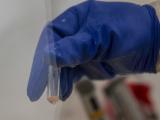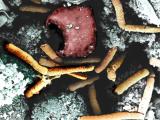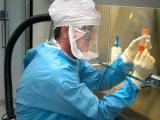Sep 10, 2007 (CIDRAP News) – Two people from Danbury, Conn., were recently diagnosed with cutaneous anthrax infections, probably because of exposure to spores on untanned animal hides brought from Africa.
Media reports said the two people are members of the same family, and one uses animal hides to make and restore drums. William Gerrish, a spokesman for the Connecticut Department of Health, said the two patients were recovering and that officials were testing their contacts to see if anyone else was exposed, according to a Sep 5 New York Times report.
Samples from the patients' home and a backyard barn tested positive for anthrax, and health officials gathered more samples for additional testing, said Rachel Sunny, a spokeswoman for the Connecticut Department of Environmental Protection who was quoted in a Sep 7 follow-up story in the Times.
The New Haven office of the FBI said terrorism was not suspected, the Times report said.
Anthrax spores are found in soil in many parts of the world. Anthrax is primarily an animal disease, but naturally occurring cutaneous and inhalational anthrax infections in humans can sometimes result from handling the meat, hair, or hides of infected animals.
Bernadette Burden, a spokeswoman for the US Centers for Disease Control and Prevention, told the Times that only one or two anthrax cases occur each year in the United States.
Cutaneous anthrax, caused by Bacillus anthracis spores, typically appears as a skin ulcer surrounded by painless swelling. The infection resolves with antibiotic treatment. Human-to-human transmission is rare and generally can occur only when patients have draining lesions.
African hides used in drum-making were also linked to an anthrax case in 2006. A drummer from New York City became ill with inhalational anthrax after a performance in Pennsylvania. He was hospitalized for a month, but has since returned to drum-making, according to the Times.
See also:
Feb 28, 2006 CIDRAP News story "Tests back hides as anthrax source in New York case"
CIDRAP anthrax overview



















